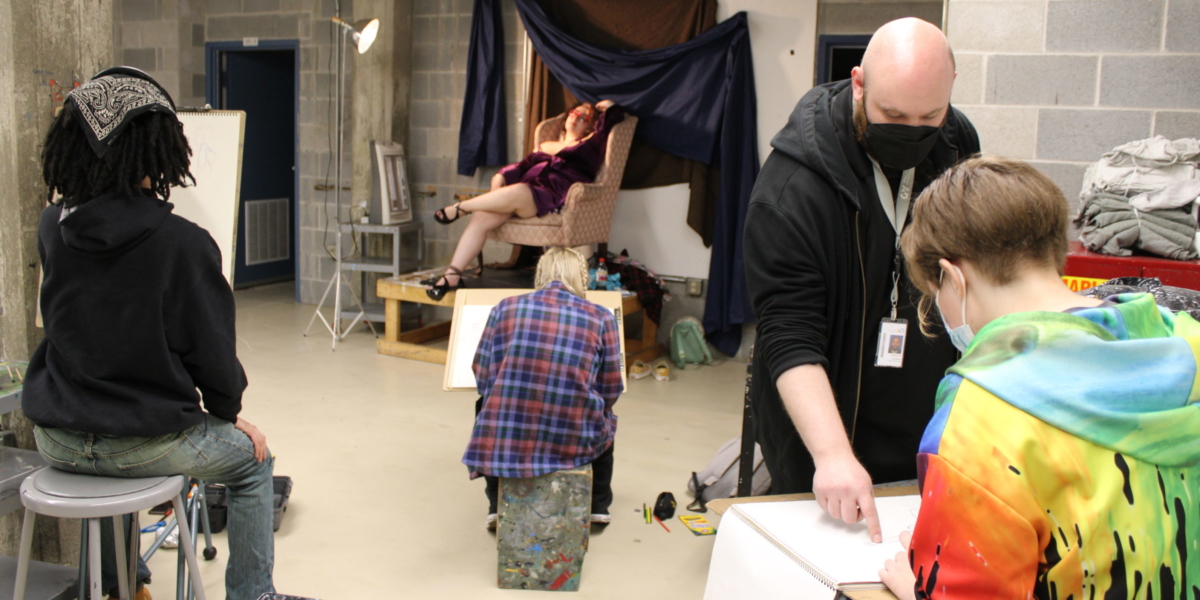
Working with life models: An interview with PCA&D Model Coordinator Evan Kitson
Thursday, April 7th, 2022
Just about every student works with a live figure model at some point in their years at Pennsylvania College of Art & Design — no matter their major.
Especially as they move beyond their Foundation year, some majors find less need to collaborate with a figure model, but that base of figural representation and anatomy continues to be helpful.
But what makes a “good” figure model? What’s the purpose? What are the advantages?
Evan Kitson, the College’s new Model Coordinator, is an adjunct in the Fine Art Department and also a 2010 graduate of PCA&D. He shared more about this art school practice, why working with a live model beats referring to photographs, and why working with a variety of figure types and personalities builds a strong artistic practice.
At another level, ensuring the College’s life model program is wide-ranging is at the crux of PCA&D’s Strategic Plan.
“Diversity, equity, and inclusion work as a core value of our current Strategic Plan is also central to the College’s evolving mission,” says Dr. Carissa Massey, the Provost at PCA&D. “Programming, such as public speakers or affinity months, may be one visible way in which this work is occurring in our community. But there are myriad other ways this is happening. We are also taking on the work of examining and revising our systems, practices, and policies to decentralize privilege and make and hold space for diverse people, perspectives, and experiences.
“Under the leadership of (Fine Art Chair) Professor Becky Blosser, Dean Linda King Brown, and Professor Evan Kitson, PCA&D revised the live model recruitment processes and practices to both meet student learning needs as well decolonize the curriculum,” Massey adds. “To fully challenge and change privilege traditions that center whiteness, heteronormativity, binary genders, and normative body shapes, artists and designers must take on the work of imaging diverse bodies, representing peripheral experiences, and acknowledging this work as our collective responsibility.”
Working with life models
Is there a “traditional” type of person or body that is used for collaborating with a figure model?
Evan Kitson: Nope, there isn’t. In fact, the greater variety of “figure type,” the better! It’s important for artists to reflect their environment and times, and working with a wide variety of figure models ensures our students will have confidence in depicting their world around them.
What characteristics do different life models bring?
EK: In the studio classroom, it’s a lot of fun to collaborate with different life models to each bring their own personality and abilities into the space when they work with us. Unfortunately, there’s an artist stereotype in movies … that showcases a certain type of life model that often mirrors a traditional fashion model type, and while we welcome figure types of all kinds, we love variety more than anything.
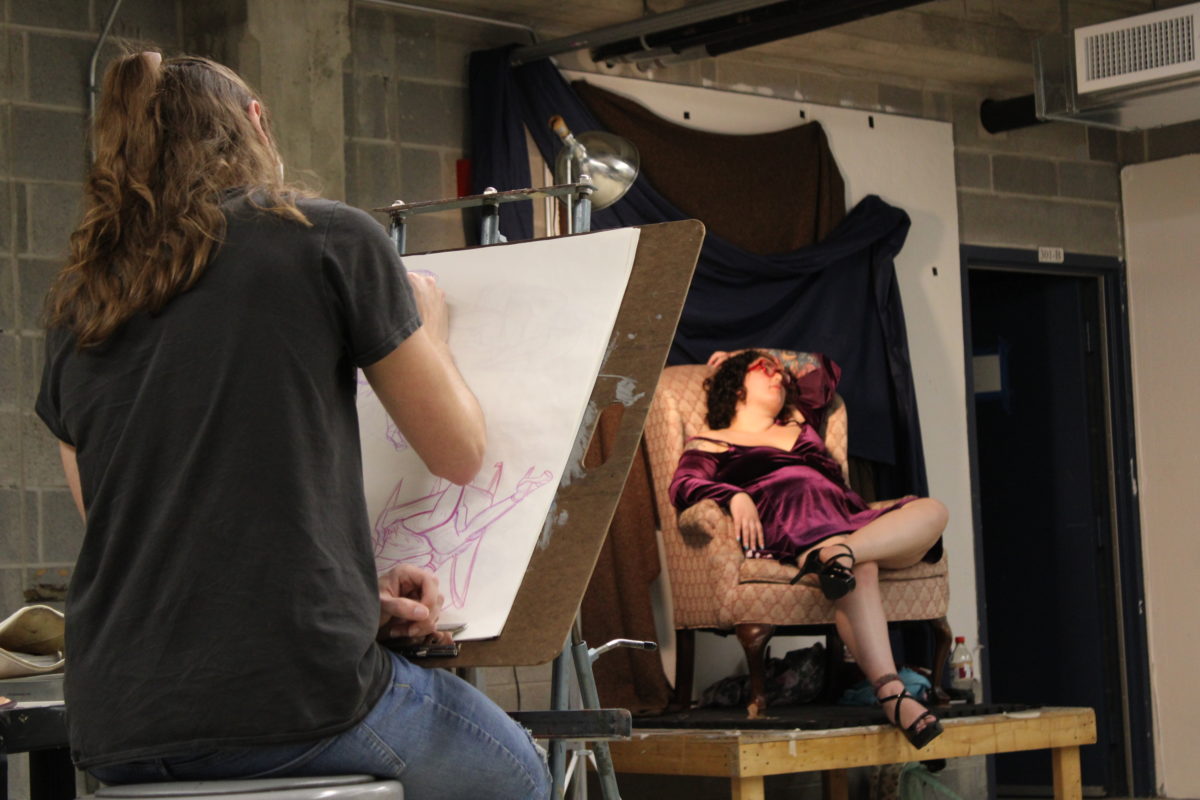
Drawing from life models, says PCA&D’s Model Coordinator Evan Kitson, allows students to explore creative options and collaborate with the life models like Ciara, pictured here.
In a nutshell, can you describe the purpose of using live artist models?
EK: Traditionally, one primary reason is that we are human artists, and as such, we’re biologically hardwired to pick up on the subtleties of other human likenesses, which makes a natural depiction of another figure in many ways the ultimate representational challenge. Additionally, students come to us wanting to get involved in many different creative fields, many of which involve figural depiction in one way or another (often narrative!) — so building confidence via time in the studio drawing a model to study anatomy or various drawing/painting/design strategies for representing a figure is key to a well-rounded education for our students and their goals.
How does it compare to drawing from a photograph?
EK: Students have told me that working from observation of a “real” figure model is SO (their emphasis!) much more preferable to working from found photos on the internet, both in terms of creative options (different perspectives, unexpected discoveries — like a hand pose they never would’ve thought of — and the energy that comes from collaborating with someone in the studio. I’ll add one more major benefit that students may not always be aware of, but as instructor I see: “life models” are alive, and each resumed pose will be different. Models will move, adjust their weight in pose, and will bring the “life” part of the subject matter with them to their performance. They are not still-lifes! Students learn to work with this needed shifting and learn to adapt their habits as artists to be more open-minded, and not so “locked in” with their work until it’s time to bring it to a resolve.
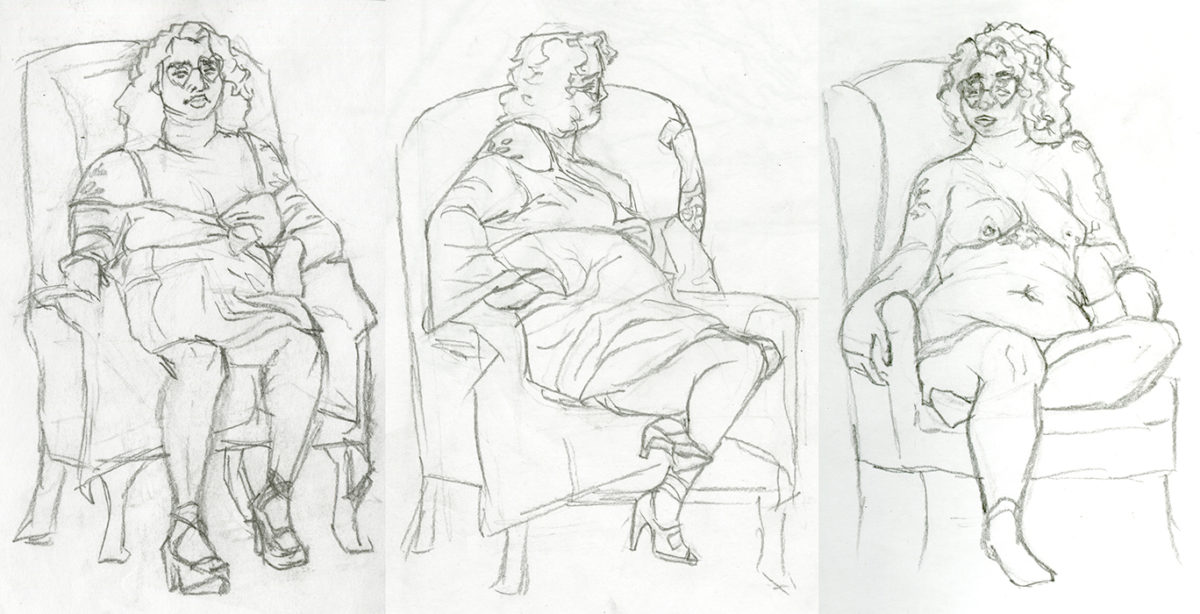
Sketch by Jonathan Shelor ’24, Illustration, of life model Ciara.
Can you describe your goal to ensure a diversity of body types, skin tones, etc., in the College’s group of models? Why is this important?
EK: I believe it’s very important to have the classroom studio reflect the times we live in and our human environment. … I know that as artists we have symbols/themes/styles which rely on our own experience. The more diverse subject matter (not only life models) we can introduce the students to, the more raw material the students will have to better shape their own symbols, themes, and styles to better reflect the world outside themselves.
What makes a good artist’s model for art students?
EK: A great life model is somebody who likes art, first and foremost! I’d say other qualities are somebody who’s comfortable being observed, the ability to hold a variety of poses for up to 20 minutes (yoga is a great way to practice and to get to know one’s own body!), and a general willingness to collaborate with the instructor to help deliver a strong class session for our students. While we do “long poses” that require lots of resumptions, we also do a bunch of shorter “gesture” poses that ask models to be a bit more animated. These are much shorter in length, 30 seconds to 5 minutes, and are a lot of fun! Whatever the model’s ability, we have sessions that will fit. Many models have told me that they love doing portrait poses, as they’ll slip into what they call a meditative state.
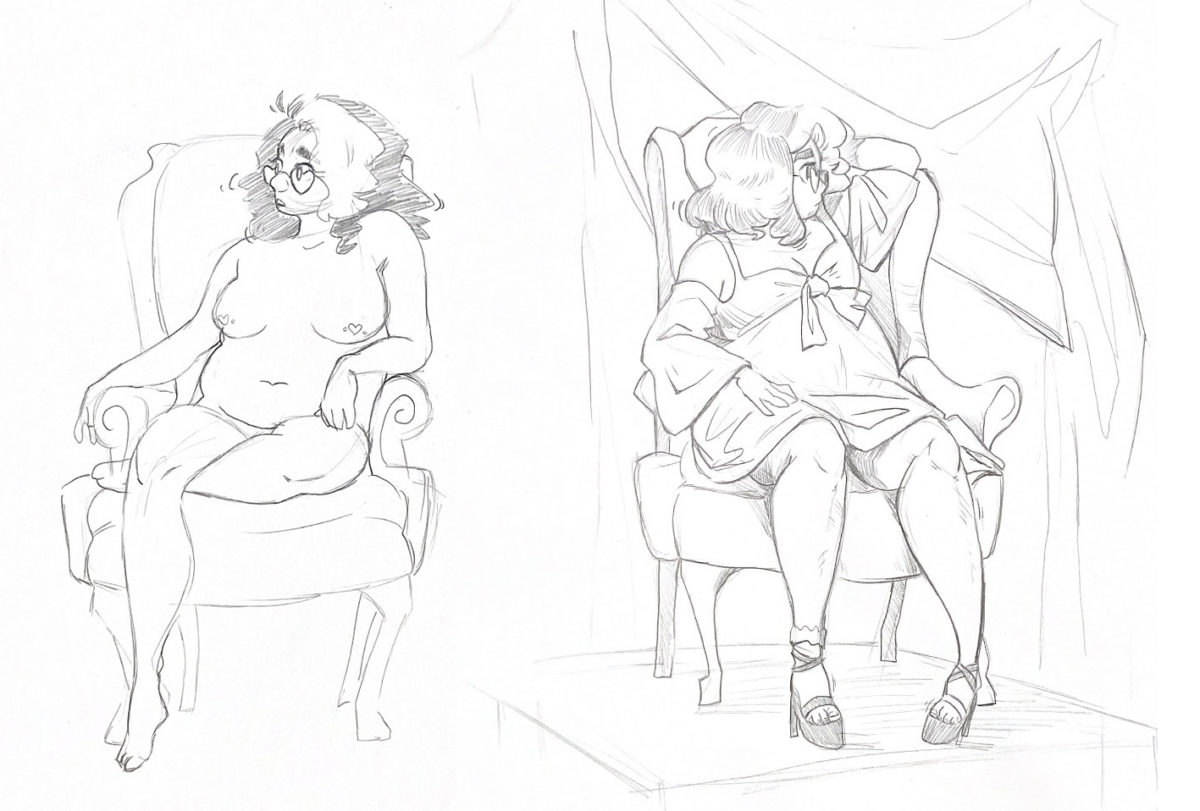
Nicholas Casso ’24, Illustration’s sketch of life model Ciara made during Prof. Evan Kitson’s Expressive Figure Illustration class.
How many models does the College use now? Are you actively looking for more?
EK: We currently have around 20 active life models, 8 of which I will have personally collaborated with this semester in my Expressive Figure Illustration course. We’re always looking for more figure models here at PCA&D. We have many opportunities for models, including nude figure (for anatomy study or more classical figurative approaches), clothed figure (to study drapery, costuming, or narratives), and portrait models. If anybody is interested in collaborating with us here at PCA&D as an artist figure model, they should reach out to us at models@pcad.edu to set up an interview.
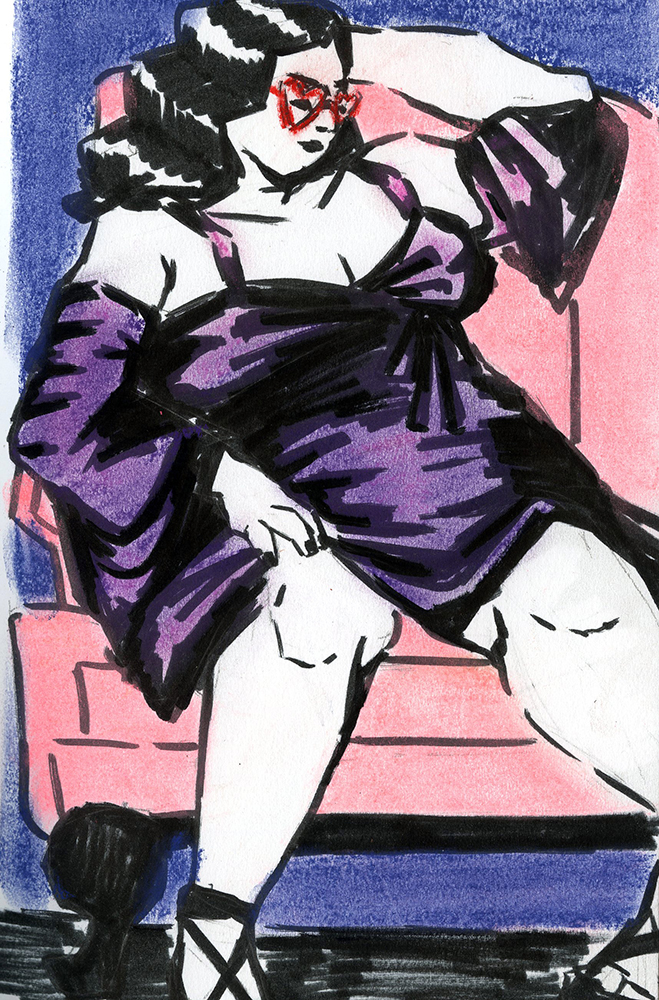
Life model Ciara, by Alivia Haltom ’24, Fine Art, sketched during Prof. Evan Kitson’s Expressive Figure Illustration class.
How does the life model program fit into PCA&D’s emphasis on, and work around, Diversity, Equity, and Inclusion initiatives?
Provost Carissa Massey: We recognize as a community that to work toward authentic diversity, equity and inclusion, we must pause and step back from the work that we do. We ask ourselves questions like: Is this work representative of our community and does it reflect the identity and experiences of current and future students? How is this initiative an opportunity to further build into our infrastructure, policies, practices, and curriculum DEI values? Does this work contribute to student learning ethically and mindfully? Are we, through this work, taking responsibility for our role in implementing change?
This initiative is one example of our current DEI work and exemplifies for our teaching community how to view the design of learning experiences as an opportunity to advance these values.”
Top photo: Instructor Evan Kitson works with life model Ciara and students in his Expressive Figure Illustration course, Spring 2022.
